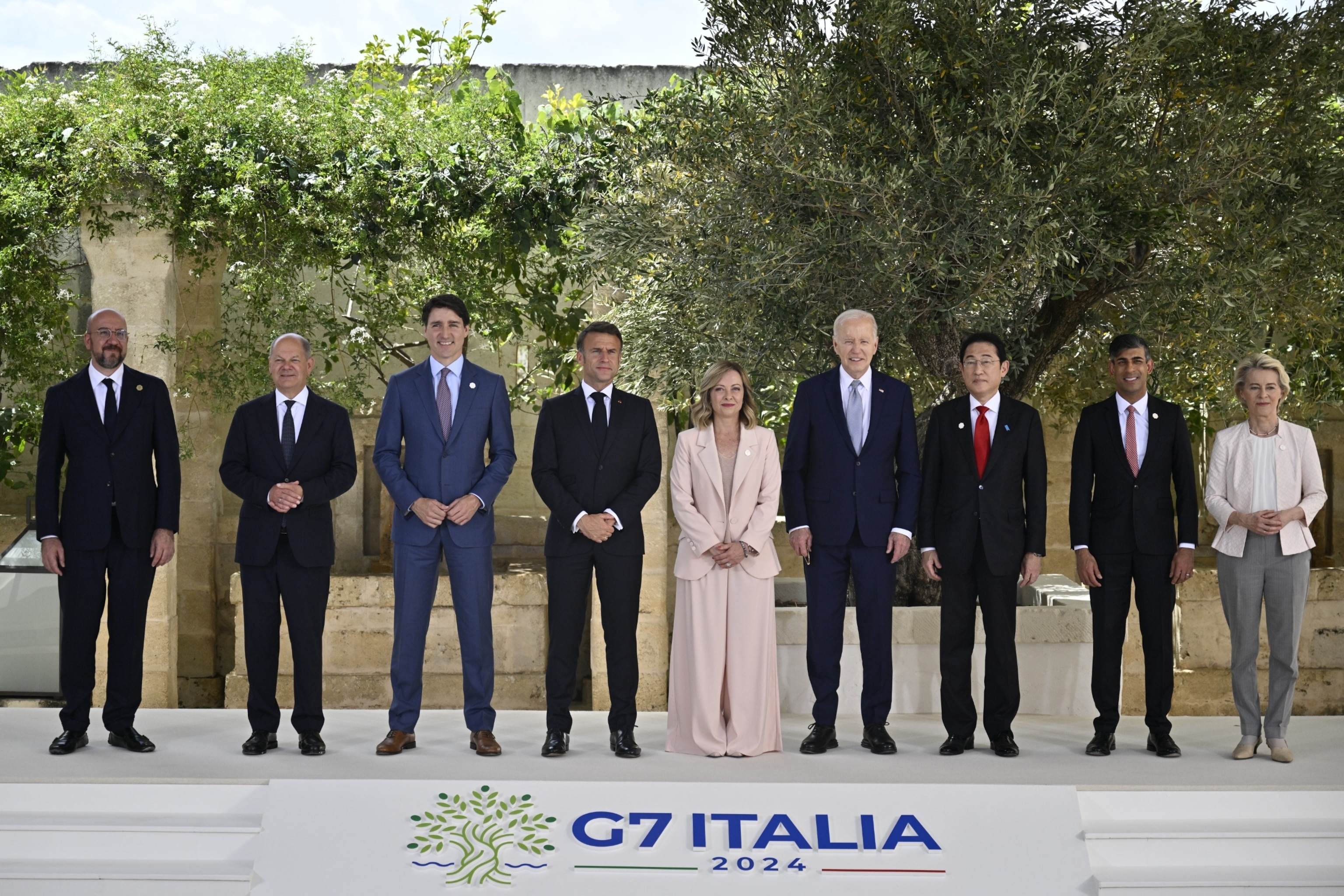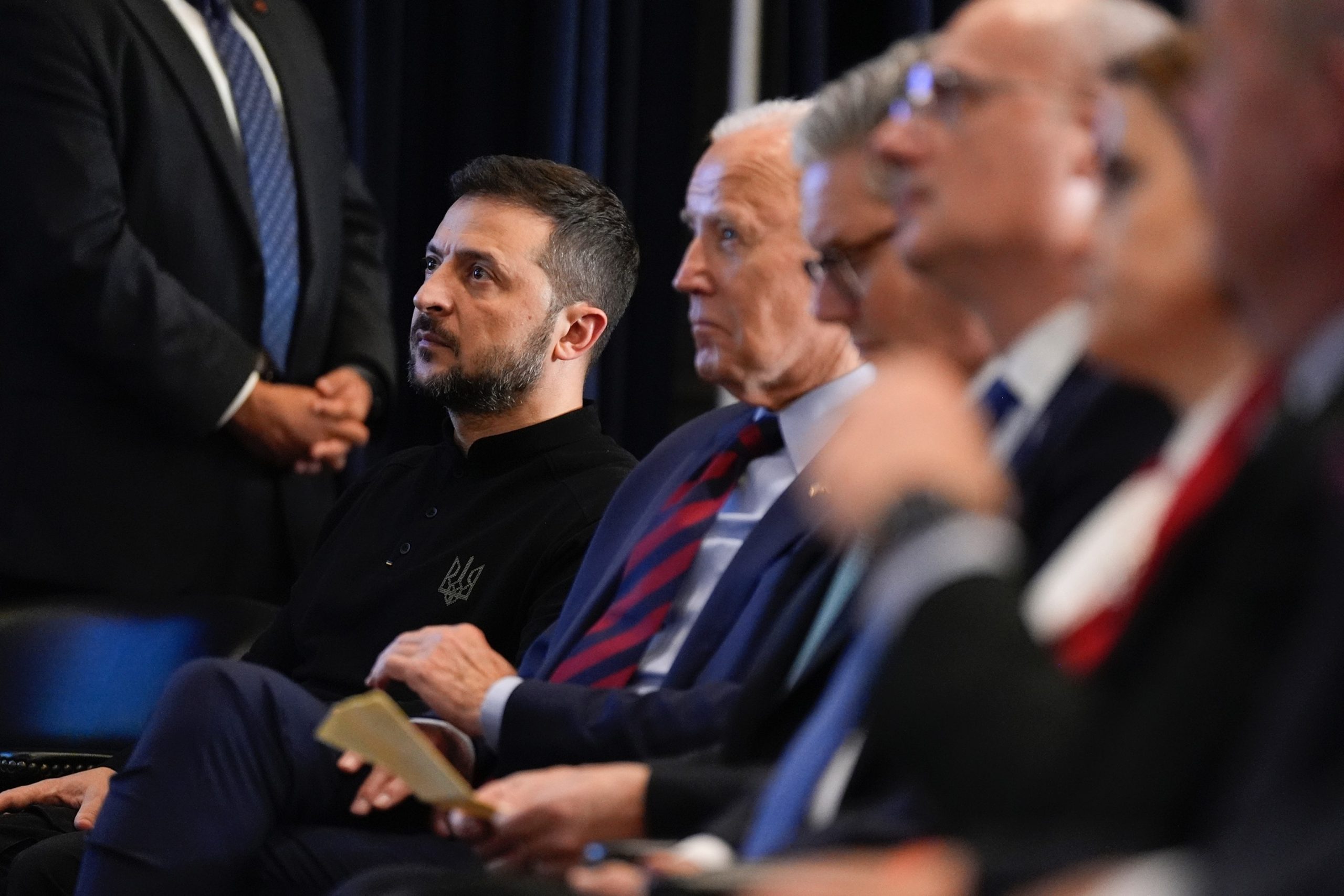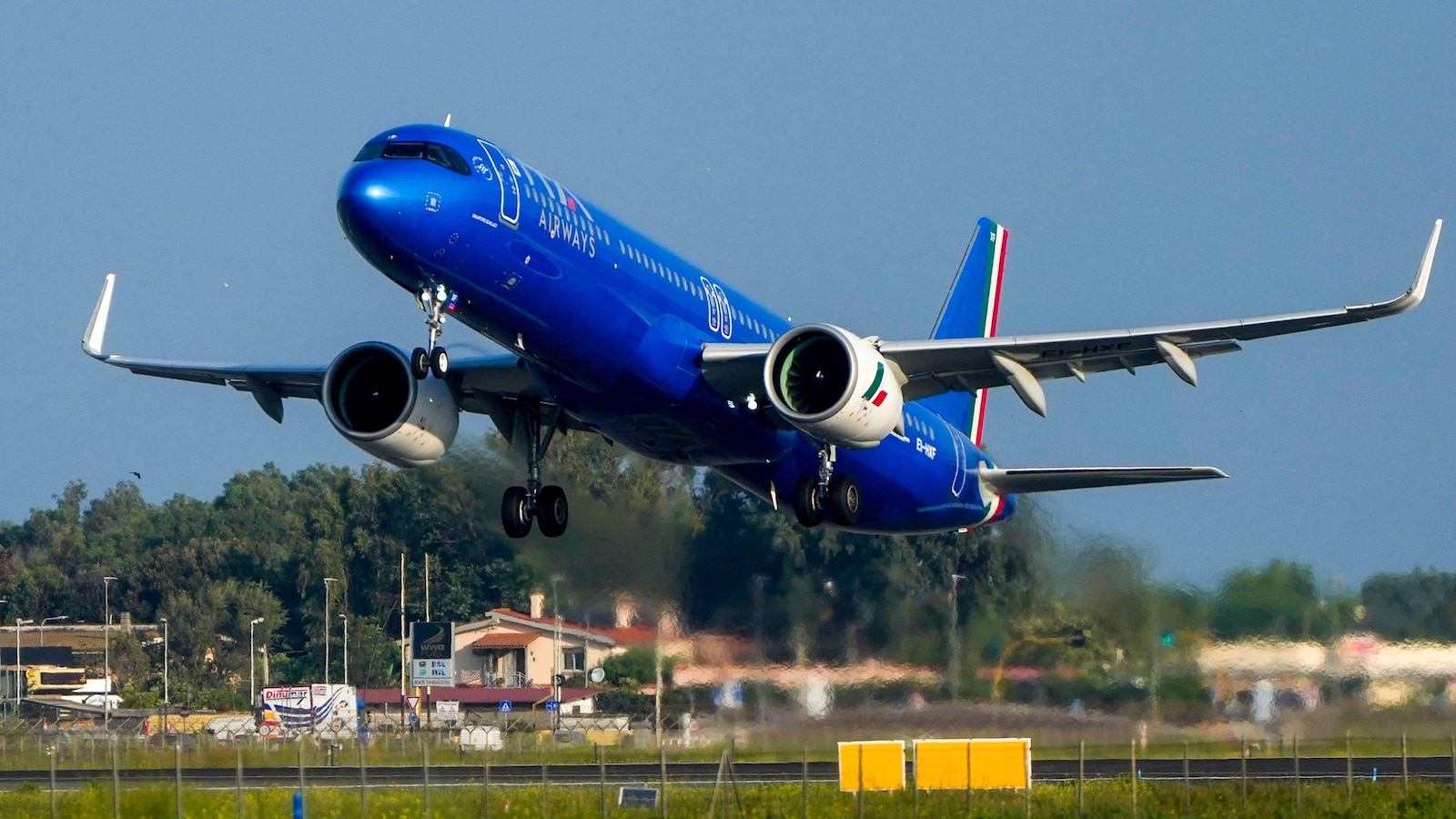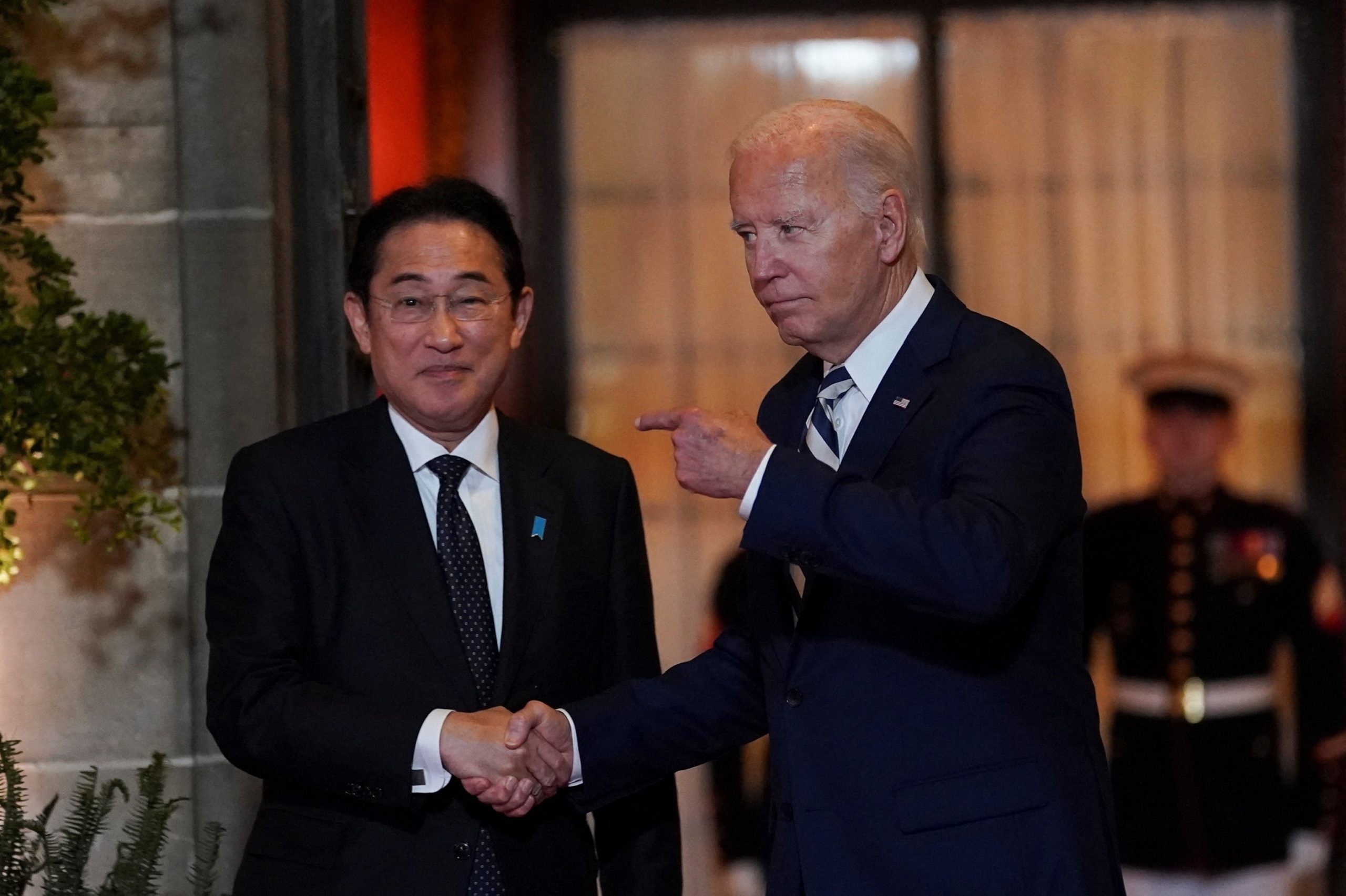G7 leaders on Thursday agreed to lend Ukraine $50 billion this year — backed by profits from frozen Russian assets — to help the country’s war effort and rebuilding.
This plan has been years in the making. It’s a win for President Biden, who has been pushing allies to agree to the deal, amid hesitation from some European countries.
The agreement will be formalized in the communique at the end of the summit.
But there are still key details of the plan the countries need to work out. The US is willing to make a loan of up to $50 billion, though it’s unclear exactly how much the U.S. will end up lending. Other counties will pitch in to share the risk.
“We’re going to move with urgency,” a senior administration official said on a call with reporters.

A family photo during a welcome ceremony on day one of the 50th G7 summit at Borgo Egnazia on June 13, 2024 in Fasano, Italy.
Antonio Masiello/Getty Images
“Ukraine is still going to have a large financial need next year and beyond and this summit is our best chance to act collectively to close the gap… This agreement is a signal from the leading democracies of the world, that we’re not going to fatigue and defending Ukraine’s freedom and that Putin is not going to outlast us.”
Officials said that while it will take time for the funds to be disbursed, they do expect the money to begin to be disbursed this calendar year.
Funds will be used for military, budget, humanitarian, and reconstruction support.
When asked by reporters about the risks associated with the loans, the senior administration official said that it can be thought of as a”secured loan” because of the interest that is generated from the Russian assets. The official added that there are scenarios in which the income stream “may not flow,” but noted that reparations could be a solution.
“How are we going to get repaid? Russia pays…the income comes from the interest stream on the immobilized asset,” the official said. “The principal is untouched for now, but we have full optionality to seize the principal later if the political will is there.”
The official added that “if there is a peace settlement, either the assets stay immobilized. And keep generating interest to repay the loans or Russia pays for the damage it’s caused. Either way, there’s a source of repayment.”
When I asked how the U.S. overcame pushback from some allies, the official said that the risks of this agreement outweighed the risk of Ukraine falling short on funding to counter Russia’s offensive.
“What’s the alternative? And if Ukraine was insufficiently financed, to win this war, what would be the chilling effect it would cause across Europe and the rest of the world? What would be the signal to autocrats that they can redraw borders by force? Those are the costs, I think we all agreed were unacceptable, and that’s why we acted,” the administration official said.
The Group of Seven (G7) leaders have recently reached an agreement to provide a $50 billion loan to Ukraine, utilizing frozen Russian assets. This decision comes in response to the ongoing conflict between Russia and Ukraine, which has escalated in recent months.
The G7, which consists of the United States, Canada, France, Germany, Italy, Japan, and the United Kingdom, made the announcement following a meeting in Brussels. The leaders expressed their support for Ukraine and their commitment to helping the country defend itself against Russian aggression.
The $50 billion loan will be used to bolster Ukraine’s economy and strengthen its defense capabilities. The funds will come from frozen Russian assets that have been seized by G7 countries in response to Russia’s annexation of Crimea and its support for separatist rebels in eastern Ukraine.
This move is seen as a significant step in providing Ukraine with the resources it needs to combat Russian aggression and stabilize its economy. The loan will help Ukraine rebuild its infrastructure, support its military efforts, and address the humanitarian crisis that has resulted from the conflict.
In addition to the financial support, the G7 leaders also reaffirmed their commitment to upholding international law and ensuring the sovereignty and territorial integrity of Ukraine. They called on Russia to respect the Minsk agreements and work towards a peaceful resolution to the conflict.
The decision to provide a $50 billion loan to Ukraine utilizing frozen Russian assets demonstrates the solidarity of the G7 countries in standing up to Russian aggression and supporting Ukraine in its time of need. It sends a strong message to Russia that its actions will not be tolerated and that the international community will continue to hold it accountable for its violations of international law.
Overall, this agreement represents a significant milestone in the ongoing conflict between Russia and Ukraine and highlights the importance of international cooperation in addressing global challenges. The G7 leaders have shown their commitment to supporting Ukraine and ensuring peace and stability in the region.



